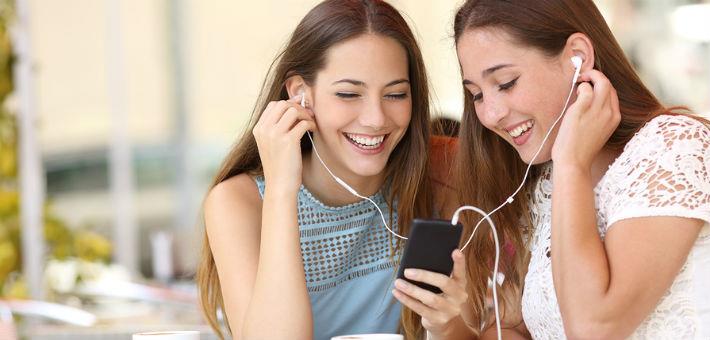
Mostly Nice, Hardly Naughty – Teens Use Online Media to Benefit, Not Bother Others
Worries about teens’ antisocial online behavior might not be justified, according to a study in Media Psychology. The study shows that teens use online media mostly to help and benefit others; not to harm or bother them. The use of specific types of online media might also help them regulate intense emotions.
Take aways
- Teens perform and receive more prosocial than antisocial behaviors in an online context.
- The degree to which teens perform and receive these online behaviors depends on the type of online media they use.
- Teens who experience intense emotions (both positive and negative) more often use social and entertaining online media.
- Thus, teens select and use certain types of online media in order to deal with their emotions.
- For professionals working with youth this might indicate that helping teens to appropriately share their emotions online can have great opportunities for their social and emotional welfare.
Study information
The question?
How do teens behave online (both prosocial and antisocial)? And how is this behavior related to the types of online media teens use and the emotions they experience?
Who?
1720 high school students (mean age: 13.6 years old; 54% girls; 89% was in the general education track and 11% in vocational education)
Where?
Flanders, Belgium
How?
High school students in Flanders were asked to participate in the study through their schools. Students who agreed to participate completed a survey during school hours, containing questions about the frequency with which they performed and received online prosocial (e.g., saying nice things, offering help) and antisocial behaviors (e.g., saying mean things, spreading rumors) and how often they experienced certain emotions during the past month (positive emotions like happiness, pride, and love and negative emotions such as anger, sadness, and guilt). Moreover, teens were asked how often they used several types of online media, including social and audiovisual media (social media use, listening to music, and watching videos), functional online media (e-mailing, using the Internet for school work, and watching/reading the news), and online gaming (alone or with others).
Facts and findings
- Teens said to perform and receive online prosocial behaviors more often than online antisocial behaviors.
- The most frequently reported prosocial behavior (performed and received) was letting each other know they liked something the other did.
- The most frequent antisocial behavior (performed and received) was saying mean things about each other.
- Overall, teens experienced more positive than negative emotions.
- Teens who experienced more positive and negative emotions also said they performed and received more online prosocial and antisocial behaviors.
- Teens who had more intense positive and negative emotions also used more social, audiovisual, and functional media, but did not involve more often in online gaming than teens who had less intense emotions. This suggests that some (but not all) types of media can function to regulate teens’ emotions.
- Teens who gamed more reported to perform less prosocial and more antisocial online behaviors, and also received less prosocial behaviors online.
- Teens who used social and audiovisual media both performed and received more prosocial and antisocial acts online. The authors suggested that the type of behavior that is performed or received depends on the media content (e.g., positive media messages might encourage teens to act prosocial, thereby prompting others to react to them in a prosocial way).
- Using online media for functional means was not associated with teens’ online social behaviors.
- Critical note: No conclusions can be made about cause (e.g., emotions and type of online media) and effect (e.g., prosocial and antisocial behaviors). It is possible that the way teens feel and the type of media they use affect the nature of their behavior, but vice versa, teens’ pro- and antisocial behaviors may also influence how they feel and which type of media they turn to.